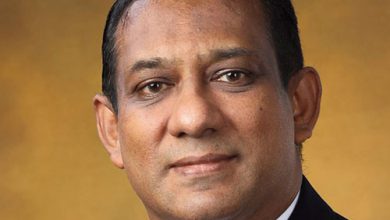CIRCULAR ECONOMY
Himesh Fernando
HOW TO REINVENT THE WHEEL
Discovering ways to operate a sustainable circular economy in Sri Lanka
Overview of a circular economy (CE)
An operating model for corporates and governments.
This incentivises
Repairing, refurbishing, sharing and reusing of products, packaging and by products of manufacturing – rather than scrapping them.
Contribution to the economy
It makes materials contribute to the economy for as long as possible.
A fancy word for sustainability and CSR…?
Absolutely not! Sustainability is about people and the planet. CE is about economic benefits to actors that implement the system.
Examples
Think of LEGO in real life construction or the fashion industry. You make, have enough, dismantle, remake.
Others
FMCG products in reusable, recyclable or biodegradable packaging; electronics where even the smallest defective component can be repaired or replaced.
What this means
It’s cheaper for the business, good for the environment and offers better value to consumers.
Presence of CE in Sri Lanka
Only a handful of businesses have embarked on this journey and they’re mostly SMEs.
Reasons for its rarity
Many businesses have already invested in and set up their linear production and consumption models.
The result of the above
There’s no supporting regulatory and policy framework to help transition from linear to circular.
Bottom line
CE needs supporting innovation and technology.
Causes for its rarity
There’s a lack of CE knowledge and skills in organisations – and there is also the Sri Lankan consumer mindset.
Benefits to Sri Lanka
It’s cheaper for businesses when overall costs are considered, wastage is minimal (i.e. lean biz models), and businesses have a purpose and foundation for growth.
The big picture
A circular economy helps businesses to keep pace with technology and innovation, and builds a truly sustainable business for generations.
How to go circular
Establish reverse supply chains for products and packaging, and use alternative sustainable materials when offering a product or service.
Business models
CE business models such as repairs, refurbishment and so on will favour extended product life.
Benefits
Encourages optimal utilisation and consumers will only pay for what they use.
Nexus between innovation and CE
Using creativity and technology to minimise costs and waste, and maximise profits.
CE will solve…
Recycling – in Sri Lanka, only a small percentage of recyclable material flows from consumers to recycling facilities.
And the rest…
Ends up in landfills and the ocean.
Addressing the recycling problem
Change consumer behaviour by offering incentives.
An example
A network of smart interactive machines where consumers can deposit recyclable containers and earn credits for each item.
And then…
The credits can be redeemed against their bills at partner outlets.
After which
The items collected are recycled or upcycled into polyester garments, books and paper; or reused in glass and aluminium manufacture.
Your vision for CE in Sri Lanka
A circular economy is a must for the government and every corporate.
Achieving this goal
There should be supporting fiscal policies, a regulatory framework and measurement mechanisms.
How it would help Sri Lanka
For dollar revenue, Sri Lanka will have to enter global supply chains.
Global consequences
Whether we like it or not, global consumers will demand that we become circular and Sri Lankan consumers would follow suit – CE growth is only a matter of time.
Best time to embrace this concept
When the country is revamping its strategies and policies – which is now!
Reasoning
All of Sri Lanka is in ‘economising mode’ and a circular economy will help us achieve this goal.
Points for improvement
Business models and technological advancements that drive down cost structures.
Qualities one needs to pursue a career such as yours
Passion to have an impact, lean and economising mentality, spotting opportunities for materials, T-shaped skills, a bit of science and a lot of patience.
Your mantra for success
When the going gets tough, the tough get going!






